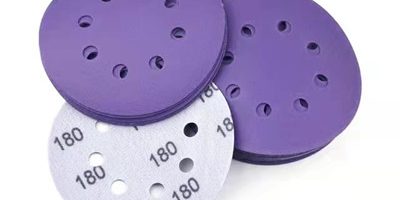Wet sanding is a technique that involves using water or a water-based lubricant with sanding discs to achieve specific finishing effects. While dry sanding is more common, wet sanding has its own set of advantages and applications. In this blog, we’ll explore when and how to use wet sanding discs effectively.
- Automotive Refinishing: Wet sanding is frequently employed in automotive refinishing. It is used to remove imperfections in clear coats, such as orange peel, runs, or dust nibs. Wet sanding creates a smooth surface for polishing and buffing, resulting in a flawless finish.
- Woodworking: In woodworking, wet sanding is used for finishing wooden surfaces to a high sheen. It helps to raise the grain and achieve an exceptionally smooth and polished surface. It’s particularly beneficial when working with hardwoods.
- Metal Polishing: Wet sanding can be used in metalworking for polishing and removing surface blemishes on metal components. It is especially useful when working with non-ferrous metals like aluminum, brass, and copper.
- Marine Applications: Boat enthusiasts and professionals often use wet sanding to prepare and finish boat hulls. It helps in achieving a smooth and hydrodynamic surface for enhanced performance.
To perform wet sanding effectively, follow these steps:
- Use Waterproof Sanding Discs: Ensure you use sanding discs specifically designed for wet sanding. These discs have a waterproof backing and can withstand exposure to water or lubricants.
- Soak the Disc: Before starting, soak the sanding disc in water or the recommended lubricant for a few minutes. This softens the abrasive material and prevents premature wear.
- Maintain Lubrication: Keep the surface you’re sanding wet throughout the process. This lubrication helps prevent heat buildup, clogging, and provides a smoother finish.
- Use Light Pressure: Apply light, even pressure when wet sanding to avoid over-removal of material and ensure uniform results.
- Clean and Inspect Regularly: Periodically rinse the surface and the sanding disc to remove debris and assess your progress. Replace the sanding disc if it becomes clogged or worn.
Wet sanding can be a valuable technique for achieving specific finishes, especially in applications where a high level of precision and smoothness is required. By understanding when and how to use wet sanding discs effectively, you can add this valuable tool to your repertoire of finishing techniques.










